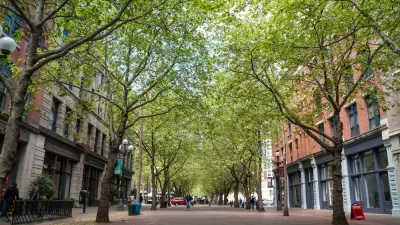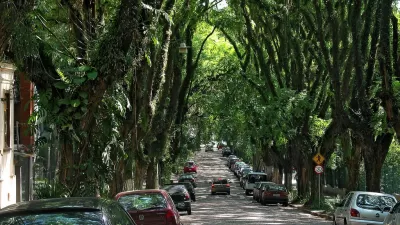The definition of blight may be in the eye of the beholder, but it may also be subconscious. Broken windows, abandoned buildings, and weed-filled yards may actually create stress and degrade health, according to a small study out of Philadelphia.

Designations of blight have a fraught legal history in the United States, with many so-called blighted neighborhoods being wiped out by urban renewal projects in the 1950s through 1970s. Regardless of what the law says, the subconscious mind may in fact know blight when it sees it.
A recent study by Gina South, a professor at the University of Pennsylvania Medical School, looked at Philadelphia residents' responses to blight-reduction efforts. The results of her small sample suggest that residents' heart rates and stress levels dropped when they observed lots that had been de-blighted through repairs, cleanups, and various greening techniques.
"There is increasing evidence to show that our environments do affect our health," South told Fast.co.Exist. "Urban planners really need to consider that as we intervene in places. Cities like Baltimore, Detroit, Cleveland, Philadelphia all have high rates of vacant land and that really impacts the health of people living in those neighborhoods."
"If that turns out the way we think it will, vacant lot greening really will be [proven to be a] low cost intervention cities can take to impact health and safety for a lot of residents," she said.
FULL STORY: Urban Blight Isn't Just Bad To Look At, It's Bad For Your Health

Planetizen Federal Action Tracker
A weekly monitor of how Trump’s orders and actions are impacting planners and planning in America.

Map: Where Senate Republicans Want to Sell Your Public Lands
For public land advocates, the Senate Republicans’ proposal to sell millions of acres of public land in the West is “the biggest fight of their careers.”

Restaurant Patios Were a Pandemic Win — Why Were They so Hard to Keep?
Social distancing requirements and changes in travel patterns prompted cities to pilot new uses for street and sidewalk space. Then it got complicated.

Platform Pilsner: Vancouver Transit Agency Releases... a Beer?
TransLink will receive a portion of every sale of the four-pack.

Toronto Weighs Cheaper Transit, Parking Hikes for Major Events
Special event rates would take effect during large festivals, sports games and concerts to ‘discourage driving, manage congestion and free up space for transit.”

Berlin to Consider Car-Free Zone Larger Than Manhattan
The area bound by the 22-mile Ringbahn would still allow 12 uses of a private automobile per year per person, and several other exemptions.
Urban Design for Planners 1: Software Tools
This six-course series explores essential urban design concepts using open source software and equips planners with the tools they need to participate fully in the urban design process.
Planning for Universal Design
Learn the tools for implementing Universal Design in planning regulations.
Heyer Gruel & Associates PA
JM Goldson LLC
Custer County Colorado
City of Camden Redevelopment Agency
City of Astoria
Transportation Research & Education Center (TREC) at Portland State University
Camden Redevelopment Agency
City of Claremont
Municipality of Princeton (NJ)





























